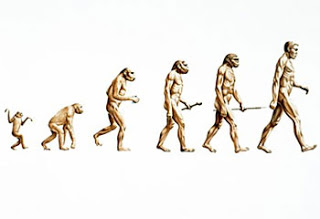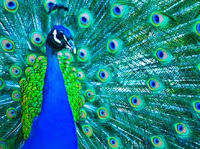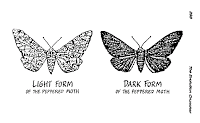Biology


- Evolution
Evolution: Darwin vs. Lamarck Darwin's theory is called descent with modification. This means that he believed that each generation of an organisms offspring is in someway different than the previous generation. Which in conclusion would mean that...
- Evolution Part 3 - Natural Selection
EVOLUTION PART 3 ? NATURAL SELECTIONMs. Carter MUTATIONS are changes in our DNA. Sometimes, mutations are harmful and cause death. Other times, mutations give the individual an advantage and allow these individual to survive certain environmental conditions...
- Comparison Between Darwinism And Neo-darwinism
Darwinism and Neo-Darwinism: Major differences Darwinism Neo-Darwinism 1. Proposed by Darwin and Alfred Wallace It is the modified Darwinism in the light of genetics 2. Causes of variations...
- 5. Evolution
Click here for PDFEvolution is an orderly change from one form to another. Evolutionary Biology: Study of history of life forms. ORIGIN OF LIFEBig Bang Theory states that universe originated about 20 billion years ago, by a thermonuclear explosion (big...
- When Evolution Goes Sideways ? Sea Slug Hybrids, Part 3
This is the third and final installment in our story of photosynthesis by an animal. E. chlorotica, a simple sea slug, has proven to be not so simple. We have seen that it is an exception to the "animals as heterotrophs" rule, as well as an exception...
Biology
Natural Selection
What is Natural Selection?
Natural Selection was a evolution theory introduced by Darwin in 1859. His theory was that the organisms that were best adapted and equipped to compete in their environment would survive and pass on their strong genetic traits to offspring, and over time that would lead to evolution. It also goes the other way, organism that are less adapted to their environment will reproduce much slower and soon be eliminated leaving only the most evolved organisms to live and continue multiplying.

Confused? Here are a couple examples.
- The peppered moth: Up until the industrial revolution the peppered moths were generally white in color with black spots. The air in London became full of soot and began turning the white trees that they camouflaged in, to a dark black. The birds began to eat the lighter colored moths because they were easily spotted. Over a few months dark moths started appearing and lighter moths became scarce.
- The peacock: The more impressive the tail of a male peacock, the higher its chances of finding a mate. Female peacocks choose mates based on the color of the feathers. According to experts, the brightness of the colors might signal to females that the animal has high-quality genes. This would make him ideal for reproduction and to ensure the survival of the offspring, so they're chosen first when it's time to mate.


- Evolution
Evolution: Darwin vs. Lamarck Darwin's theory is called descent with modification. This means that he believed that each generation of an organisms offspring is in someway different than the previous generation. Which in conclusion would mean that...
- Evolution Part 3 - Natural Selection
EVOLUTION PART 3 ? NATURAL SELECTIONMs. Carter MUTATIONS are changes in our DNA. Sometimes, mutations are harmful and cause death. Other times, mutations give the individual an advantage and allow these individual to survive certain environmental conditions...
- Comparison Between Darwinism And Neo-darwinism
Darwinism and Neo-Darwinism: Major differences Darwinism Neo-Darwinism 1. Proposed by Darwin and Alfred Wallace It is the modified Darwinism in the light of genetics 2. Causes of variations...
- 5. Evolution
Click here for PDFEvolution is an orderly change from one form to another. Evolutionary Biology: Study of history of life forms. ORIGIN OF LIFEBig Bang Theory states that universe originated about 20 billion years ago, by a thermonuclear explosion (big...
- When Evolution Goes Sideways ? Sea Slug Hybrids, Part 3
This is the third and final installment in our story of photosynthesis by an animal. E. chlorotica, a simple sea slug, has proven to be not so simple. We have seen that it is an exception to the "animals as heterotrophs" rule, as well as an exception...
